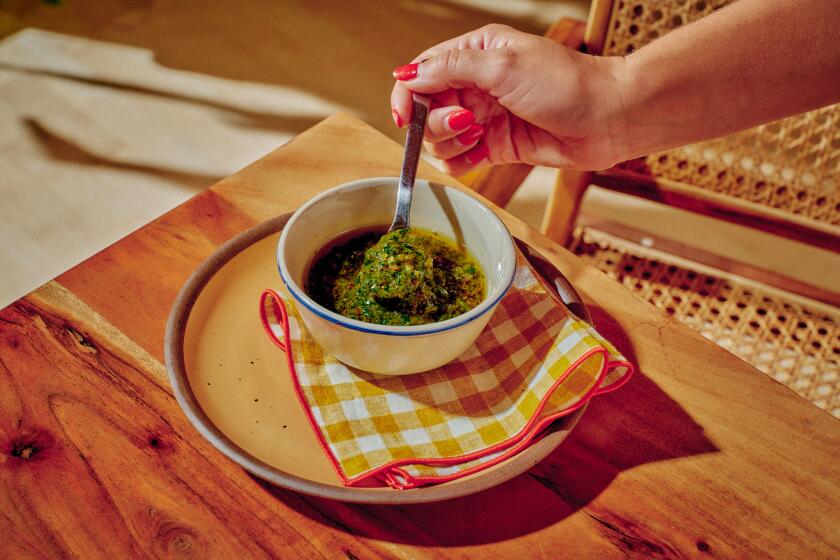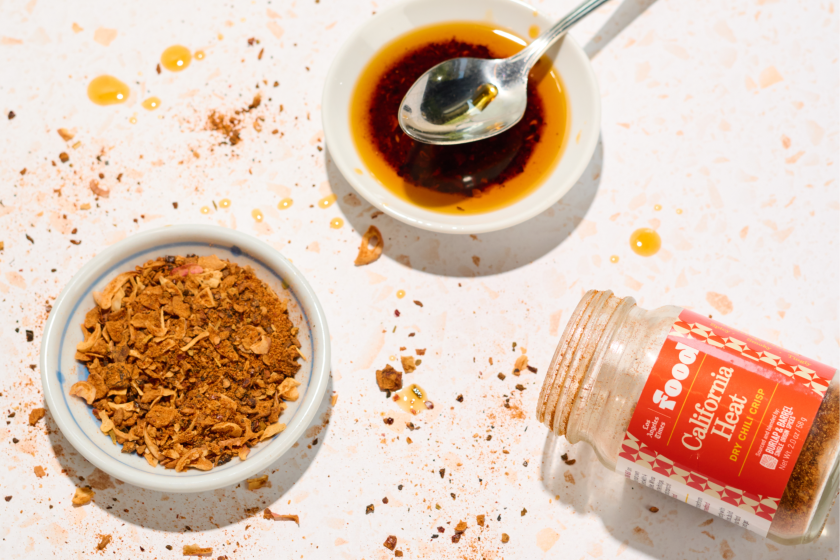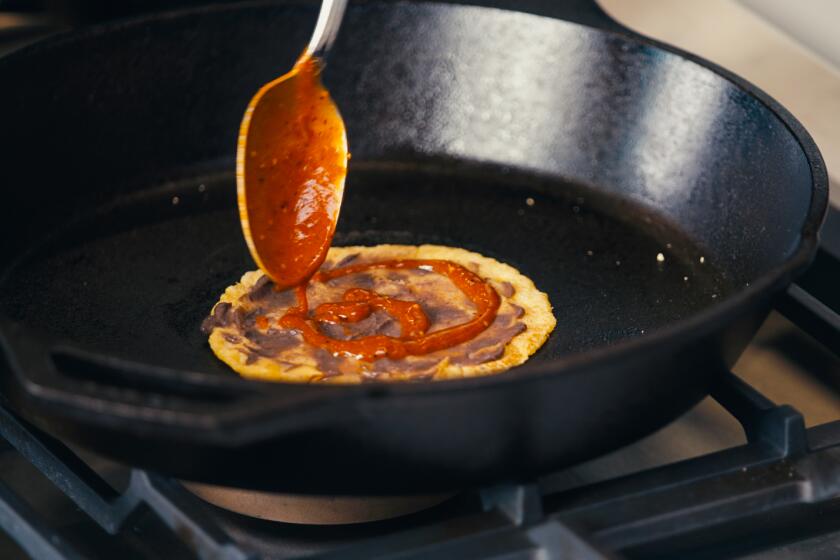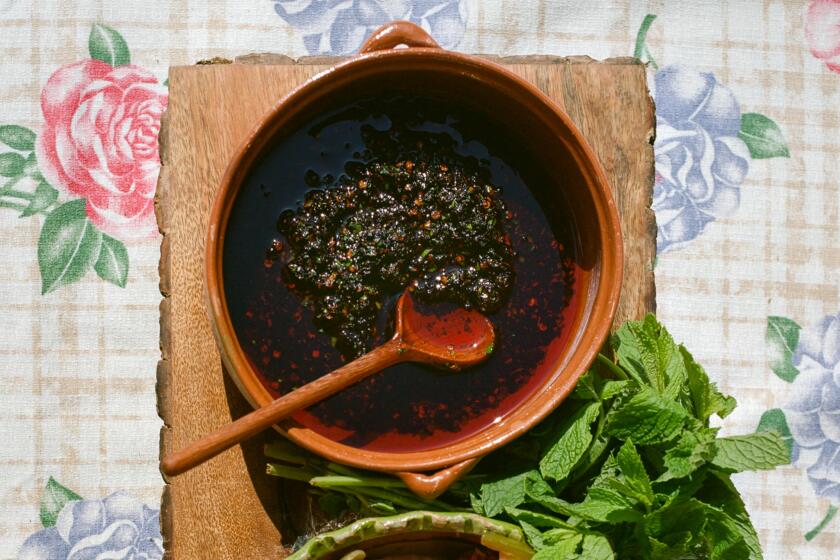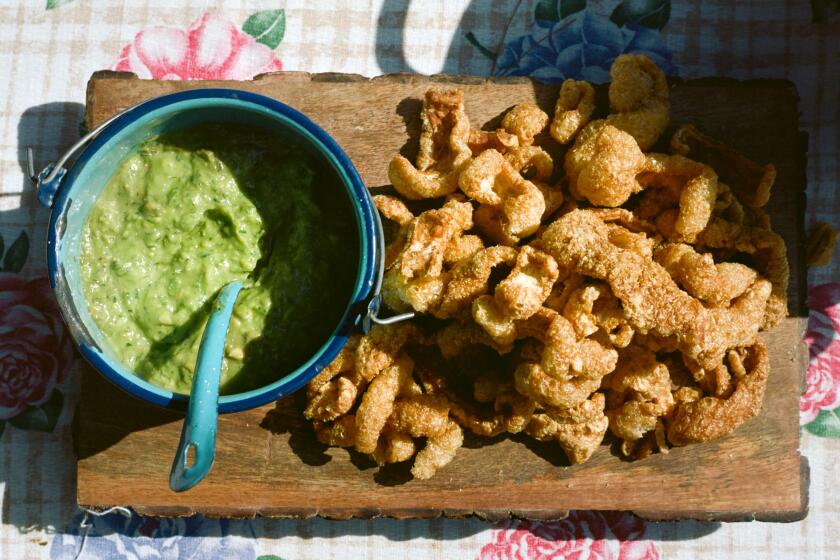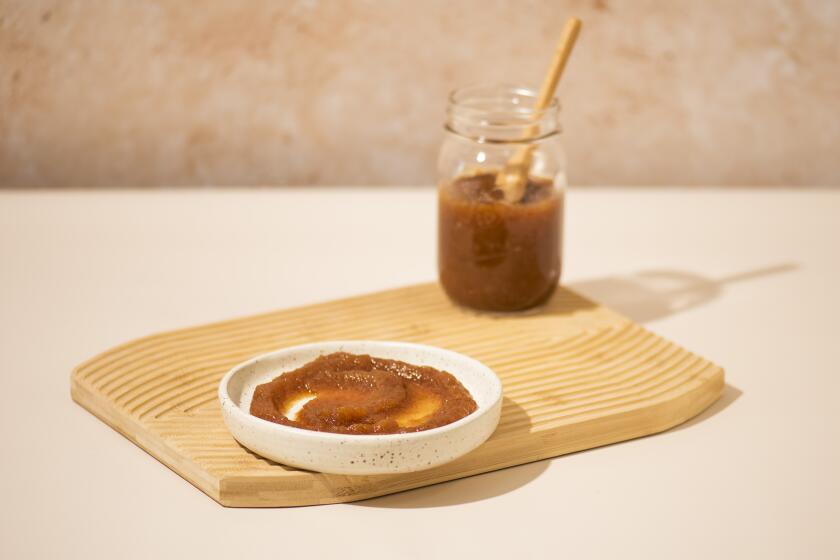Basic vinaigrette
A tall bottle of olive oil, a cruet of vinegar, a dish of sea salt, a pepper grinder. This casual kitchen still life is the simple formula for a vinaigrette, a sauce so humble that it often doesn’t seem like a sauce at all.
But it is: In French it’s called la sauce vinaigrette. And a good one transforms a bowl of salad into something extraordinary. And it’s not just for salads. A drizzle of vinaigrette on the plate can elevate any number of dishes -- grilled fish or roasted chicken, pan-seared steak or wilted greens.
As the weather heats up and we want simpler fare, grilled outside or fresh from the market stands, a vinaigrette can be all we need -- or want.
It’s the simplest thing in the world to make. Just memorize this: 3 to 1. That’s the classic proportion of oil to vinegar.
Because there are so few ingredients, their quality is important. Use the best oil and vinegar you can find, good sea salt and freshly cracked black pepper.
The only equipment you need is a whisk and a bowl. Whisk the salt and pepper into the vinegar first -- salt doesn’t dissolve in oil, but it does in vinegar. Then whisk in the oil. That’s a basic sauce vinaigrette.
A classic vinaigrette is made with red wine vinegar and olive oil. Of course you can add to it: mustard or shallots or herbs or spices. And you can vary the kind of oil and vinegar -- using walnut or hazelnut oil, balsamic or white wine vinegar or sherry vinegar.
Traditionally, the oil is drizzled in slowly, and you whisk all the while to emulsify it, resulting in a creamy, smooth sauce. If you whisk a little Dijon mustard into the vinegar before whisking in the olive oil, it emulsifies even more easily. (If you’re using an amazing olive oil, though, you might want to skip the mustard, which will cover up the nuances of the oil.)
But you don’t have to emulsify: Everything will combine when you toss the salad. Or if you’re using the vinaigrette to sauce a plate that will receive a pristine sauteed fillet of Petrale sole, you might welcome the effect of the amber beads of olive oil eddying in the rosy vinegar, the oil and vinegar beading and traveling on the plate like a pointillist painting.
Depending on the oil and vinegar you choose and your palate, you might want to depart from the basic 3-1 ratio. The vinegar, which is the acid component of the sauce, can vary in acidity from 4% to 8% or more.
If you use a high-acidity vinegar, you might want to move closer to 4 parts oil to 1 part vinegar. Ditto if you substitute lemon juice for some or all of the vinegar, or if you want to really highlight a great olive oil.
A softer vinaigrette, made with a higher percentage of a particularly floral extra virgin olive oil, perfectly complements a delicate salad of butter lettuce and fresh herbs.
A sharper vinaigrette, with a higher proportion of, say, aged balsamic vinegar, would better accompany grilled steak or a salad of wilted bitter greens: dishes that can stand up to, or even call for, a more pronounced flavor. A mustardy vinaigrette is great with seared flank steak or a piece of wild salmon.
--
Mix and match
Experiment with flavors by matching a mild rice wine vinegar with a touch of toasted sesame oil added to the olive oil, or pair a walnut oil with a mellow sherry vinegar.
You can also play with texture. Some chopped basil, a fine dice of shallots or a mash of roasted garlic adds not just flavor, but body. Whisk in grated ginger or stone-ground mustard and wild honey.
Playing with temperature is an option too. Heat the vinegar or use pan juices in place of some of the oil to make a hot vinaigrette -- a simple and fast sauce to complement the roast chicken or pan-seared hanger steak you’ve just finished.
Or keep it simple. Composed of a kitchen’s bare essentials, a vinaigrette is often best at its most elemental -- a powerful example of how good minimalism can taste.
In a medium bowl, whisk together the vinegar, salt and pepper. When the salt has dissolved, whisk in the olive oil. Serve on salads and other dishes, whisking again just before using.
Cilantro-basil vinaigrette: Replace red wine vinegar with white balsamic vinegar and mix in a few tablespoons of minced fresh cilantro and basil before adding olive oil to the mixture.
Citrus vinaigrette: Replace the vinegar with freshly squeezed lemon or lime (or any other citrus) juice. Taste for seasoning -- depending on how acidic the citrus is, you may want to add more oil to balance the tartness. Great with grilled fish or an avocado salad.
Warm cider vinaigrette: Simmer half a cup of cider vinegar, some chopped shallots, salt and pepper until reduced to one-third cup. Remove from the heat and whisk in two-thirds cup of oil. Serve over a salad of dandelion or other slightly bitter greens, some bacon lardons and warm goat cheese.
Sherry-walnut vinaigrette: Replace red wine vinegar with sherry vinegar; whisk in walnut oil instead of olive oil.
Champagne-hazelnut vinaigrette: Replace red wine vinegar with Champagne vinegar and whisk in hazelnut oil. Terrific with a salad of baby spinach, sliced strawberries and a handful of crushed, toasted hazelnuts.
Jalapeno-lime-cilantro vinaigrette: Replace red wine vinegar with equal parts white wine vinegar and lime juice. In a food processor or blender, blend the vinegar, lime juice, salt, pepper, 2 tablespoons fresh cilantro and half a seeded jalapeno; with the motor still running, slowly pour in olive oil.
Anchovy vinaigrette: In a food processor or blender, process two to three anchovy fillets and 2 teaspoons Dijon mustard with the red wine vinegar, then slowly pour the olive oil in with the motor running. This is great on steamed asparagus, poached leeks or romaine salad.
Parsley vinaigrette for roasted meat or chicken: After you’ve roasted or pan-seared meat or chicken, blend 3 tablespoons of the hot pan juices in a food processor or blender with salt, pepper, red wine vinegar and 2 tablespoons fresh parsley; slowly pour in 2 tablespoons olive oil with the motor running.
Garlic vinaigrette: In a mortar and pestle or using the flat side of a knife, mash together 1 large clove of garlic with the salt, then add the mixture to the vinegar and pepper before whisking in the olive oil. Or add a tablespoon of roasted garlic instead. Terrific with grilled steak or lamb chops.
Ginger-sesame vinaigrette: Replace red wine vinegar with rice wine vinegar, stir in 1 tablespoon fresh minced ginger and whisk in a mixture of 1 part toasted sesame oil and 3 parts canola oil.
Get our Cooking newsletter.
Your roundup of inspiring recipes and kitchen tricks.
You may occasionally receive promotional content from the Los Angeles Times.










